


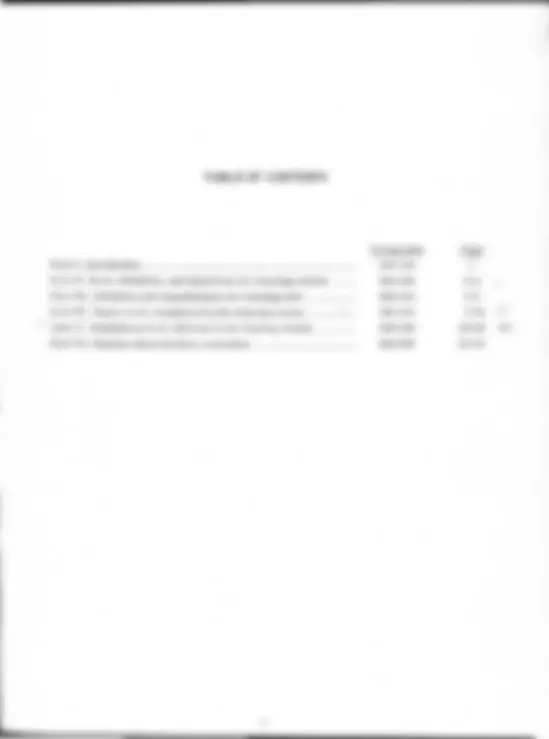
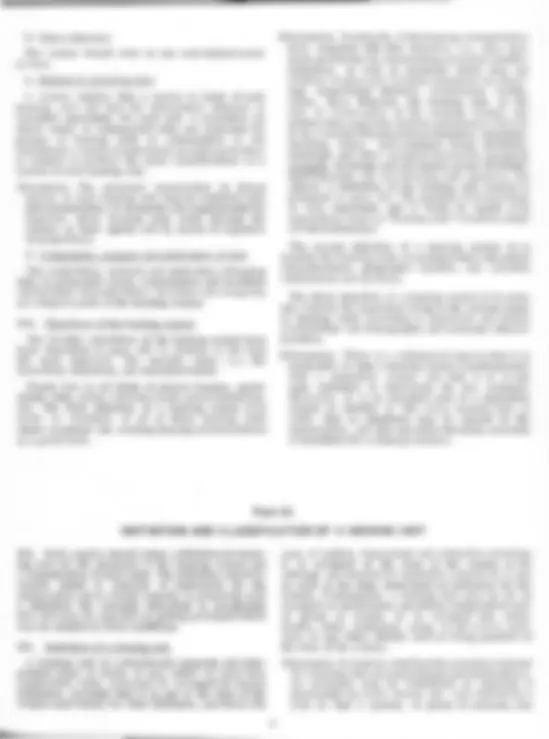
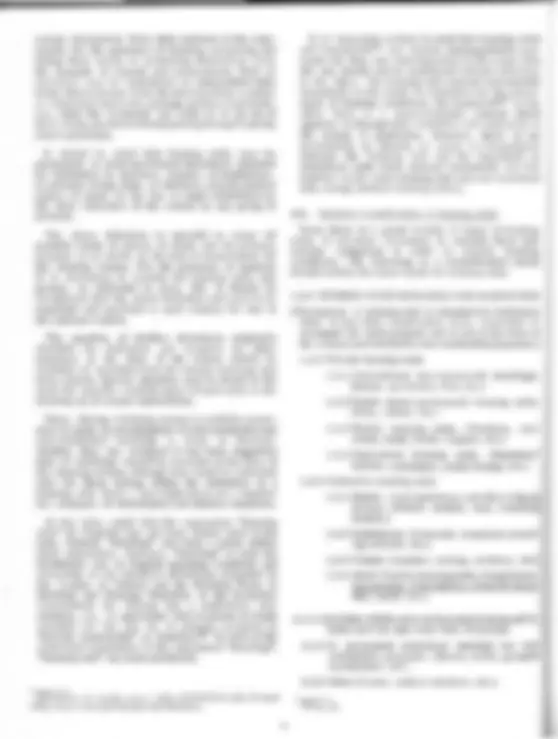



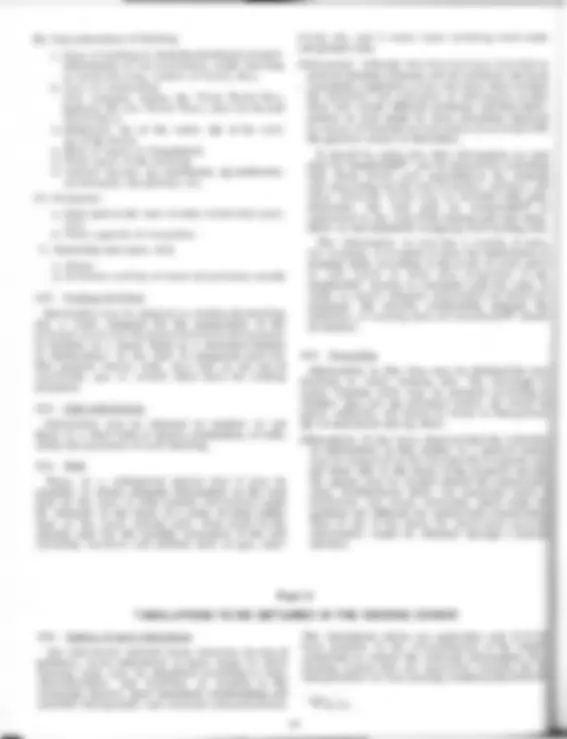
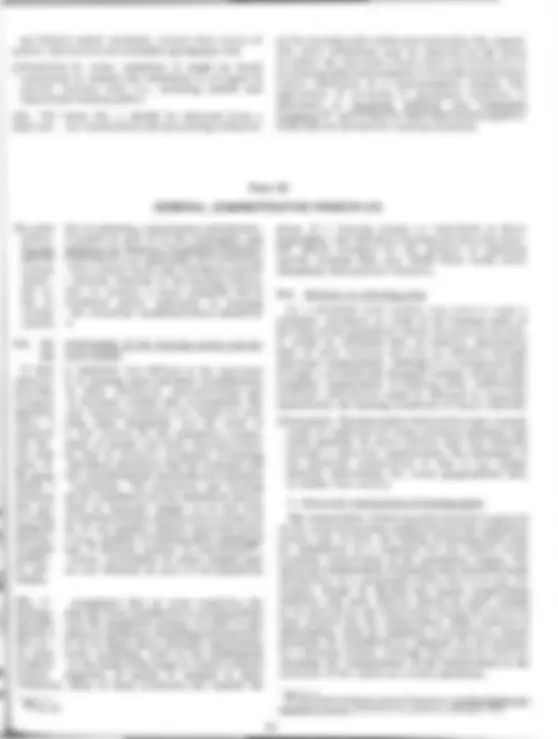


Study with the several resources on Docsity

Earn points by helping other students or get them with a premium plan


Prepare for your exams
Study with the several resources on Docsity

Earn points to download
Earn points by helping other students or get them with a premium plan
Community
Ask the community for help and clear up your study doubts
Discover the best universities in your country according to Docsity users
Free resources
Download our free guides on studying techniques, anxiety management strategies, and thesis advice from Docsity tutors
Principles for countries planning to take housing censuses or collect housing information in connection with national population censuses. It covers the importance of housing censuses, definitions and classifications of housing units, and the relationship between housing and population data. The document also discusses the need for continuous housing statistics and the universality of housing census coverage.
Typology: Exams
1 / 18

This page cannot be seen from the preview
Don't miss anything!











Symbols of United Nations documents are composed of capital letters combined with figures. Mention of such a symbol indicates a reference to a United Nations document.
Sales No.: '58. XVII. 8
Price $U.S.0.20; 1/6 stg.; Sw.fr. 0. (or equivalent in other currencies)
international or national statistical training centres organized under the technical assistance programme of the United Nations or as projects undertaken by co-operating countries;
iv
"5. That an evaluation of the international ex- perience regarding the application of the Principles be presented to the Statistical Commission at a future session."
TABLE OF CONTENTS
Part I. Introduction.......... ~....................
Part II. Need, definition,. and objectives of a housing census .•••
Part III. Definition and classification of a housing unit ••.••••• Part IV. Topics to be considered in the housing census •••••' 1 ••
/ Part V. Tabulations to be obtained in the housing census • • • • • •
Part VI. General administrative principles •••••••••••••••
v
Paragraphs 101-
201-
300-
40.0- 500-
601-
Page 1
1-
3- 7-10 V
10-13 (^) "" I
13-
The housing census should supply basic data on the number of "housing units" ,11 classified according to objective criteria, into groups which indicate the various aspects of housing conditions. The census data, therefore, must be related to the structural characteristics and facilities which have a bearing upon the maintenance of privacy and conditions generally considered essential to health, and to the measurement of population density in relation to the housing available at the time of the census.
However, it must be recognized that not all the information required to assess housing needs or to formulate housing programmes can be obtained through a housing census. Additional data must be obtained tllrough the population census, current housing statistics, special housing surveys, vital statistics, economic statistics, etc., but the housing census will constitute the basic framework within which the estimates will be made, indices computed, and further statistical inquiries planned.
The Statistical Commission has directed the attention of national statistical services "to the need to develop from housing censuses, the sort of bench-mark statistics in housing that could be supplemented by current building and construction statistics and which would provide a continuous up-to-date picture of the housing position needed for the consideration of housing programmes. Such a system of housing statistics would permit the use of more intensive surveys of housing and more adequate utilization of housing data obtained through household inquiries or by special sample surveys. Thus, the census data would provide a frame for such samples and surveys. "~/
The need to assess the housing conditions requires the establishment of a system of statistics on housing which may be said to be composed of three elements: (1) the housing census, (2) housing surveys, and (3) current housing statistics.
1ISee discussion of the "housing unit" concept in para. 301 below. 'ijE/2876. para. 117.
units, and of what types, are being construct ed , demolished, or destroyed per year, and the natural , economic and social factors which have a bearing on the rate of change of the housing available to th e population.
These Principles refer only to the housing census ,
A housing census may be defined as the tota] process of collecting, compiling, analysing and publishing statistical data pertaining, at a specifie d time, to all housing unit s 21 and occupants thereof in a country or in a well delimited territory for th e purpose of obtaining informatibn concerning the housing inventory and housing conditions of the population.
Discussion: The Working Group on Censuses of PopUla- tion and Housing of the Conference of European Statisticians indicated, at its second session, that "The dual objective of housing censuses made it necessary that if such censuses were taken separately from popUlation censuses, data on house- holds Z/ occupying dwellings (which were essentially demographic data) had to be collected in addition to data on the dwellings themselves"}/ A similar observation has been made by several countries commenting on the first draft of the Principles.
Some of the essential features of a national housing census are: A. Sponsorship
An official national census is sponsored and carried out by the national government, with the co-operation of provinCial and local governments.
B. Geographic coverage
The coverage of a census operation should relate to a precisely defined territory.
C. Universality
The census operation should cover all types of housing units~U or places of abode..
Discussion: The Census Sub-Committee of COINS, at its fourth seSSion, indicated that, while agreeing that the prinCiple of universality is of primary importance in the enumeration of a housing census in urban and well populated rural areas, there may be many arguments in favour of omitting from a nation's housing census distinct groups of indigenoUS population living a tribal or non-incorporated type of existence. It was suggested that if such groupS were included the corresponding statistics should be tabulated separately.]
~See para. 301 below. YOp. cit. 1Vconf^ • Eur. Stats/WG.6/25. para, 61. 2/S~e para. 301 below.
D. Time reference
The census should refer to one well-defined point of time.
E. Method of collecting data
A census implies that a survey is made of each housing unit and that the information obtained is recorded separately for each unit. A procedure by which totals or summarized data are collected for groups of housing units or communities is not considered a census except insofar as such a procedure is adapted to produce the same classifications as a census of each housing unit.
Discussion: The universal enumeration by direct survey of each housing unit may be combined with self-enumeration of occupants and supplemented by inquiries about housing units made through the owners or their agents and by means of registers of properties.]
F. Compilation, analysis and publicatj.on of data
The compilation, analysis and publication of housing data by geographic areas, communities and localities and by basic characteristics, facilities and occupancy are integral parts of the housing census.
The broader objectives of the housirig census have been described in para. 201 in relation to the need for such inquiries. The specific aims, i.e., the immediate objectives, are described below.
People live in all kinds of places-houses, apart- ments, huts, caves, convents, boats, penal institutions, etc. The first objective of a housing census is to make an inventory of all of these housing units which cOllstitute the existing housing accommodation at a given time.
[Discussion: Practically all the housing censuses taken have complied with this objective , i.e., they have made provisions for enumerating premises used - for habitation, as well as premises which may not conform to generally accepted standards for dwell- ings (improvised shelters, warehouses, booths, caves, etc.). However, the housing unit, as thEl unit of enumeration of the hous i ng census, has seldom been explicitly defined and has been referred to by a variety ofterms such as habitation, domicilio, dwelling, house, self-contained living premises, dwellings and other occupied structures, unidad de vivienda, dwellings and non-family group dwellings, dwelling-units and non-dwelling _unit quarters, and others. A definition of the housing unit concept is proposed in para. 301. The question of terminology is very important, and it would be useful if an expression--such as "housing unit "-would be adopt- ed internationally.]
The second objective of a housing census is to classify the housing units according to their structural characteristics, geographic location, and available installations and services.
The third objective of a housing census is to count and classify the population living in the various types of housing units according to household and family relationships and demographic and economic charac- teristics.
[Discussion: There is a widespread opinion that it is preferable to take a housing census Simultaneously with a population census and that it is in any case essential to interrelate the two censuses. Moreover, it is an essential part of a population census to identify or list every housing unit, in order that no inhabitant may be missed in the enumeration, and this operation therefore provides a foundation for a housing census.]
A housing unit is a structurally separate and inde- pendent place of abode. It may either (1) have been constructed, built, converted or arranged for human habitation, provided that it is not at the time of the census used wholly for other purposes, and -that in the
case of mobile, improvised and collective premises it is occupied at the time of the census, or (2) although not intended for habitation actually be in use as such at the time established as reference for the census. Consequently, a housing unit may be (1) an occupied or vacant house, apartment, independent room or group of rooms; or an occupied hut, cabin, trailer, hotel, institution, camp, or (2) a barn, mail, cave or liny other shelter used as living quarters at the time of the census.
Discussion: It must be noted that the essential features of a housing unit are separateness and independence. An enclosure may be considered as separate if surrounded by walls, fences, etc., and covered by a roof so that a person, or group of persons, can
[Discussion: The classification outlined in paragraph 302 and described more fully in paragraphs 303 to 313 has been designed to group in broad classes housing units with similar structural character- istics. The distribution of occupants (population) among the various groups of housing units should supply valuable information about the housing accom- modation available at the time of the census. The classification could afford a useful basis for stratification for the purpose of future sample surveys to be taken on the basis of the census. Specific consideration of each group of housing units should prove useful for the purposes of enumeration of both housing units and population.]
A dwelling is a room or suite of rooms and its accessories in a permanent building or structurally separated part thereof which by the way it has been built, rebuilt, converted, etc., is intended for private habitation and is not, at the time of the census, used wholly for other purposes. It should have a separate access to a street (direct or via a garden or grounds) or to a common space within the building (staircase, passage, gallery and so on) [a detached one-family house, a self-contained flat, an apartment, etc.]
Detached rooms for habitation whiGh are clearly built, rebuilt, converted, etc., to be used as a part of the dwelling should be counted as part ofthe dwelling. [servants' quarters on an estate or belonging to a villa.]
[Discussion: This text, originally written in the plural instead of the singular, and referring to all dwellings regardless of their occupancy, was proposed by the Working Party on Housing and Buildjng Statistics of the Economic Commission for Europe,!.Y Both the Working Group on Censuses of Population and Housing (Conference of European Statisticians) and the Censuj3 Sub-Committee of COINS suggested excluding from the census coverage the dwellings used wholly for non-residential purposes at the time of the census. The definition presented here takes account of such suggestions; however, it might be convenient in some countries to make special studies to determine the extent to which available housing is being used for non-residential purposes.
12/
Conventional dwellings have been referred to in the following ways : dwelling, dwelling unit, dwelling house, residential dwelling unit; family dwelling, house, logement, vivienda, unidad de vivienda, etc. However, the same expreSSions have also been used to indicate a housing unit of any type. It is proposed that the expression "dwelling" be adopted with the meaning stated in its definition, i.e., to indicate only that type of housing unit located in permanent buildings and designed for occupancy by one private household.W
By "permanent building" is understood a structure which may be expected to maintain its stability indefinitely (ten years or 'more). It is recognized that the criterion of permanency, or durability, is of difficult application by the census enumerators and that its adaptation to local conditions would require considerable study and experimentation by the national offices. The second paragraph in the definition purports to explain that a dwelling may be constituted by separate buildings within the same enclosure provided that they are clearly intended for habitation by a private household. It may be noted that although a dwelling is a housing unit intended-i.e., constructed or con-
may, at the time of the census, be unoccupied, vacant or occupied by one or more "private house- holds" or by an institutional household.]
A rustic housing unit is an independent enclosure which has been rudely constructed or erected (e,g. having mud walls, thatched roof, etc.) with locally available rustic materials such as stones, sun-dried bricks, bamboo, palm, straw or any similar vegetable materials for the purpose of habitation by a private household and is not at the time of the census used wholly for non-residential purposes. Such units may be expected to last for only a limited time (a few months to ten years) although occasionally they may last for longer periods. A rustic housing unit may be a hut, a rancho, a boMo, etc. [DiSCUSSion: This category has been s\iggested by several countries and is intended to cover housing units which are typical and traditional in many tropical rural areas.]
A mobile housing unit is any type of living accom- modation which has been made to be transported or which is a moving unit, such as a ship, boat, barge, vessel, railroad car, caravan, tent, trailer, yacht, etc., in which one or more non-transient persons spent the census night.
[Discussion: Mobile hOllsing units which are used as permanent living quarters are of special interest. It is not pOSSible, however, to obtain information on usual residence, except in those countries in
WOp. cit.
which population censuses are tabulated on a residence basis. Persons who happened to be en route (transients) on the night of the census should not be counted as occupants of their vehicles, nor should the vehicles be considered as housing units. Special instructions should be issued for the enumeration of transients on the night or day of the census.]
An improvised housing unit is an independent makeshift , or structure built of assorted waste materials without a predetermined plan for the purpose of private habitation and which is being utilized as living quarters at the time of the census. In this category are included, for example, squatters' houses, poblaciones callampas [Chile], hongos [Peru], favelas [Brazil], and any similar premises arranged and used as living quarters though they may not co:omply with generally accepted standards for habita- tions.
[Discussion: Most countries have made provisions for enumerating this type of housing unit and the number of people living therein. Hbwever, there is wide variation in the procedures and criteria used in classifying these units. There are many borderline cases and the countries should make decisions and issue detailed instructions on how to enumerate and classify improvised housing units.]
A collective housing unit is a separate and independent set of premises intended for habitation by generally large groups of individuals or several private households!1/ and occupied at the time of the census. Such units have certain common facilities, such as cooking and toilet installations, baths, lounge rooms or dormitories which are shared by the occupants. Collective housing units maybe subdivided, as indicated in the classification, into the four groups described below.
[Discussion: It should be noted that private housing units in the grounds or in the building of a collective housing unit should be separately identified and counted as private housing units. For example, if in the grounds of a hospital there is a separate and independent house intended for the habitation of the director and his family the house should be counted as a conventional dwelling. In the sarile way self- contained apartments locattld in hotel buildings should be counted as separate dwellings if they have direct access to the street or to a common space within the building. Similar cases will need to be analyzed and described in the instructions for the enumeration.]
!1/Op. cit.
This group covers any set of premises in a per- manent structure or structures designed to house groups (usually large) of individuals who are subject to a common authority or regime or who are bound by a common public objective and/or personal interests and characteristics. In this type of housing unit, occupants of the same sex usually share dormitories. In this category are included hospitals, military barracks, boarding schools, convents, prisons, etc.
This group includes enclosures containing sets of premises intended for the tranSitory occupation of individuals with common activities or interests. In this category are included military camps and camps established for the housing of workers in mining, agriculture, public works or other types of enterpriSes.
This group includes buildings and enclosures intended for collective habitation by several families or private households ill sharing certain facilities such as cooking and toilet installations. In this category would be included housing arrangements existing in certain countries such as long houses [Sarawak] barracones, certain types of conventillos or ~ de vecindad [Latin America], carre [French West Africa].
A housing unit not intended for habitation is one that has not been built, constructed, converted or arranged for human habitation but which is, neverthe- less, actually in use as living quarters at the time of the census.' Such a housing unit may be located in a permanent (i.e. durable) structure or may be a natural shelter. In this category are included stableS, barns, mills, garages, warehouses, booths, caves, etc., occupied as living quarters at the time of the censUs.
[Discussion: It must be noted that premises which, although not initially 'designed or constructed for habitation, have been convl;lrted'to serve this purpose should not be included in this category.]
the usual residents of a dwelling to be identified as distinct from the persons occupying the dwelling on the day of the census, only the usual residents should be counted as occupants ... "
In the cases of housing units occupied by one or more private households!2! each household should be identified separately. Private households have been defined as "(a) One-person household: a person who lives alone in a separate housing unit.or who as a lodger, occupies a separate room or rooms in a part of a housing unit but does not join with any of the other occupants of the housing unit to form part of a multi-person household as defined below; or
"(b) Multi-person household: a group of two or more persons who combine to occupy the whole or part of a housing unit and to provide themselves with food or other essentials for living. The group may pool their incomes and have a common budget to a greater or lesser extent. The group may be composed of related persons only or of unrelated persons or of a combination of both, including boarders but excluding lodgers ... "
"The basic criteria under the above concept of household are that the persons who constitute the household (1) jointly occupy the whole or part of a housing unit and (2) share the principal meals (unless prevented by, for example, working condi- tions) and have common provisions for basic living needs. However, in some countries it is the practice to use a different concept which equates the household with the housing unit and defines the household as the entire group of persons jointly occupying a housing unit. This concept of household does Bot provide direct information on the number of housekeeping units sharing a housing unit but may be justified where it is not feasible to distinguish between the housing unit and the household, e.g. where, in the particular circums ... tances of a country, the household (housekeeping unit) is generally conterminous with the housing unit. "17/
WOp. cit.
[Discussion: It has been suggested that the following information about the occupants might be obtained for each occupied unit: sex, age (only three broad groups, namely: under 15; 15-64; and 65 and over), sex, age and economic activity of heads of private households) (active or inactive occupation and industry), household and family relationship among the occupants. Income has also been suggested as an item to be analyzed in relation to housing charac- teristics. Additional studies and experimentation are required in order to adopt more specific principles regarding this item.]
The basic information to be obtained by the census is whether the housing unit has a piped water installa- tion, i.e. whether water is laid on to the housing unit by pipes from a community-wide system or from individual installations (pressure tanks, pumps, etc.). It is necessary to indicate whether the housing unit has a tap inside or whether it is outside but within a certain distance (100 metres) from its door. The following categories may be recognized: housing units with piped water inside; with piped water outside the unit but within 100 metres; without piped water (includ- ing piped water beyond 100 metres); and housing units for which such information could not be obtained. The housing units without piped water may be further classified according to the source of the water avail- able (a well, a river, a spring, etc.).
[Discussion: The distance, 100 metres, is arbitrary and is given here only as a general guide. The most Significant inforJIlation in relation to sanitary conditions is whether the housing unit has piped water within the premises.]
For the purposes of enumeration and control, as well as for its descriptive value, it has been found convenient in many censuses to identify dwellings as "detached houses", "cottages", "apartments", etc., or rustic housing units as "huts", "cabins", etc. In view of this experience this item may be considered a basic one.
[Discussion: This item was not considered to be essential data by the Census Sub-Committee of COINS and it was recommended that its inclusion should be left to the consideration of each country. A study of the reports of 28 housing censuses W revealed that 17 of these reports containing 194 tables, out of a total of 765, dealt with dwellings (according to varying definitions)'by type.']
ll!/Analysis of housing census tables (ST/STAT/P /L.28, 29 April 1958).
to a height of 2 metres above the ground, of a size large enough to hold a bed for an adult ( 4 m 2 at least) and at least 2 metres high over the major area of the ceiling. In this category should fall normal bedrooms, dining-rooms, living rooms, habitable attics, servants' rooms, kitchens and other separate spaces used or intended for dwelling purposes. Kitchenettes, corridors, verandahs, lobbies, etc., as well as bathrooms and toilets, should not be counted as rooms. Each country should indicate whether rooms used only for professional or business purposes have been included or excluded in calculating the number of rooms per unit and the number of persons per room.!2I
[Discussion: The number of rooms is most frequently used as a measure of the size of dwellings and as a basis for the calculation of the density of occupation, i.e., the number of persons per room. It has been suggested that the amount of living space, in addition to the number of rooms, might be included as one of the items to be collected. Although there may be some difficulty in deter- mining the rooms used only for professional or business purposes it is. generally agreed that they should be included in calculating the number of rooms per dwelling but not in calculating the number of persons per room.
It has been suggested that "in view of.the diversity of construction arrangements in the countries, it is not possible to have, for purposes of international comparability, a definition of 'room' for general application especially if it includes a size criterion in a rigid way, and it, therefore, recommends that the countries which include this topic indicate in their publications the criteria used" .~/ The minimum size of the room is indicated here as a way of clarifying the concept and not with the intention of necessarily obtaining an actual measure of each room at the time of the enumeration.]
As a minimum information should be obtained on the "following: (a) whether the dwelling or rustic housing unit has a "flush" toilet installation within its premises; (!ij whether there is another type of toilet installation and (c) whether there is no fixed installation of any type. A "flush" toilet may be defined as an installation for the disposal of human wastes through piped water under pressure, emptying into a main sewer, septic tank or cesspool.
!2IElements for this principle have been taken from the document Definitions in housing and building statistics recommended by the Working Party on Housing and Building Statistics. COnf.Eur,stats/ WG.6/7. 24 September 1956. para. 2; from Conclusions of the N Session of the Committee on Improvement of National Statistics (COINS). 3680a (COTA-1960). 11/1/56-150. p. 22; and from comments sent by the Regional Housing Centre. Bandung. Indonesia. WInter.American Statistical Institute: 2779a(COTA-1960).11/18/57- 100 p. 9.
[Discussion: For those dwellings and rustic housing units without a toilet installation additional in- formation has been obtained · in some housing censuses regarding the availability and type of such installations outside the housing units.]
Information should be obtained for each conventional (permanent) dwelling and rustic (semi-permanent) housing unit on whether the unit is occupied or vacant. Additional information may be obtained for vacant units as to whether intended for seasonal occupation, for rent, sale, or not fit for habitation. [Discussion: The enumeration of vacant units is likely to pose difficult problems since the informants may be located outside the jurisdiction of the enurr.eration zone. However, at least a total count of vacant units might be made for purposes of control of the enumeration. It must be noted that vacant units intended for seasonal occupation may represent a large proportion of the housing inventory in resort areas and the evaluation of such a category may be very useful for certain areas.)
Information should be obtained on whether the private housing unit (!!) is occupied by the owner, (Q) is rented, or(£) is under another form of tenure.
Data for private housing units (1.1.0) I. Installations
II. Household conveniences
tabulations emphasize the need to make provisions for obtaining information for each town and city as well as for larger geographic divisions. Nevertheless, it should not be interpreted that all the information outlined in the tabulations below should be published or that the tabulations indicate in any way the order in which data should be processed. For the purposes of data processing the tabulations could perhaps, be combined into a smaller number of tables and for the purposes of general publication of census results it may be sufficient to include data for the country, urban and rural, major geographic divisions and the larger cities. However, provisions should be made for storing original schedules, punch cards, tabulation sheets or computer tapes, as the case may be, so that data for the smallest areas could be made available as it becomes necessary. It may be noted that tabula- tion Nos. 1 and 2 refer to housing units of all types while the rest of the tabulations are only for certain classes of housing units.
[Discussion : It should be noted that some of the relevant information which, in these tabulations is related to the housing units could as well be presented in relation to households. 22 / It was noted by the Committee on Statistics of Large Towns of the International Statistical Institute that it would be desirable to tabulate information foi districts within towns.]
class of housing unit and geo- graphic division
Housing units included: all housng units (para- graphs 301 through 313)
Occupants included: all occupants except transients (paragraph 403) and all private households.W
Classifications:
(~) Geographic division: country, urban and rural, major civil divisions, minor civil divisions, cities and towns. (12) Class of housing unit: classification outlined in paragraph 302 and described in paragraphs 303 through 313. [Discussion: This table, which has been' called by some discussion groups the general inventory table. supplies information on the number and distribution of the housing units by class which are available in each section of the country or of the territory covered by the census as well as a distribution of the population and private householdsWaccording to the type of housing occupied by them. From this table it is possible to obtain information on the average number of occupants per housing unit and inCidentally on tbe average number of persons per private household occupying each type of housing unit. In some countries it may be found convenient
WOP. cit.
and feasible to expand this table by further classifying private households~/ by type of household as indicated in paragraph 407 of ST/STAT/SER.M. 27. This expanded table would supply information on the types of households W^ occupying the various classes of housing units.
This tabulation includes all housing units without regard to occupancy. With the exception of dwellings (1.1.1) and rustic housing units (1.1.2), which may be either occupied or vacant, other housing units must be occupied in order to· fall within the scope of the housing census.
It has been suggested that this same tabulation might also be made for localities by size in order to show the variation of housing conditions according to size of locality. A suitable classification of localities by size is offered in ST/STAT/SER.M/27 , para. 405.]
Housing units included: all occupied housing units (paragraphs 301 through 313)
Occupants included: all occupants except transients (paragraph 403)
Classifications:
(~) Geographic divisions : country, urban and rural, major civil divisions (!!) Class of housing units: classifications shown in paragraph 302. (2) Characteristics of occupants: to be determined by each country (paragraph 404)
[Discussion: There is a widespread opinion that this type of tabulation is essential. However, in view of the wide variation of circumstances and needs no general prinCiples could be formulated. Tabulations of this type have been utilized to describe the housing accommodation of population groups iden- tified by the economic activity, age, marital status or other characteristics of the head of the house- hold. Similarly, the occupants of specific types of , housing units may be classified according to their demographic or social and economic characteristics.
This type of tabulation can be done by including information about the family and household relation- ships and other characteristics of occupants (ob- tained during the population census) on the housing forms or cards, or vice versa, or by matching cards during the data proceSSing stage.]
Occupants included: all occupants except transients (paragraph 403)
Classifications:
@) Geographic division: country, urban and rural, major civil divisions, minor civil divisions, cities and towns. (Q) Class of housing unit: classifications out~ine in paragraph 302 and described in paragraph 303 through
(~) Water supply system: with piped water inSide; with piped water outside; without piped water; informa- tion not available. (paragraph 405)
[Discussion: This table would supply information on the percentage of the population which has ready access to a protected supply of water as well as indication on the availability of piped water for each class of housing unit. It may be noted that the availability of piped water is considered to be perhaps the most valuable indicator of sanitary conditions. The infor- mation regarding the existence of housing units without piped water in an area where there is a public water supply system has been found in certain countries to be very useful in initiating local sanitation programmes.]
Housing units included: all conventional (permanent) dwellings (para. 302, 1.1.1) and rustic (semi-per- manent) housing units (para. 302, 1.1.2) (paragraphs 302 through 305)
Classifications:
@) Geographic divisions: country, urban and rural and major civil divisions (Q) Class of housing unit: specified classifications (paragraphs 302 through 305) (Q) Number of rooms in the dwelling: 1 through 10; information not available (paragraph 407) (9) Number of occupants in the dwelling: 0, 1 through 10; information not available (paragraph 403) [Discussion: This tabulation would supply information regarding the number and distribution of dwellings and rustic housing units whether vacant (0 occupants) or occupied by number of rooms for large sections of a country or a territory covered by the census. It would indicate also the distribution of the dwellings and rustic housing units according to the number of occupants in each units. From the cross-classifica- tion by number bf rooms and number of occupants it is possible to compute the di!)tribution of dwellings and/ or rustic housing units and occupants thereof by density of occupation, i.e., by number of persons per room.
It should be noted, however, that this .table will supply information on denSity of occupation of dwellings and rustic housing units only and that if the denSity of occupation of other types such as multi-family housing units (conventillos, casas de
vecindad and so forth) is desired this tabulation would need to be expanded.]
Housing units included: total occupied conventional (permanent) dwellings (para. 302, 1.1.1) and rustic (semi-permanent) housing units (302, 1.1.2) (para- graphs 302 through 305)
Occupants included: all occupants except transients (paragraph 403)
Classifications: @) Geographic division: country, urban and rural, major civil divisions, cities and towns (b) Class of housing unit: specified classifications (pa-ragraph 302 through 305) (c) Toilet: with flush toilet; with other types of toilet installation; without toilet installation of any type; information not available (paragraph 408)
[Discussion: Some countries may find it useful to extend this tabulation to other classes of housing units and/or to vacant units. Toilet facilities may be further subdivided to indicate the types of other facilities besides a flush toilet which are available although from the point of view of obtaining inform a- tion on the sanitary conditions the flush toilet is the most meaningful indicator.]
Classifications:
@) Geographic division: countries and major geo- graphic divisions (Q) Class of housing unit: specified classifications (paragraphs 302 through 305) (c) Reason for vacancy: seasonally vacant; for rent; for- sale; dilapidated; other and unknown (paragraph
Housing units included: total occupied conventional (permanent) dwellings (para. 302, 1.1.1) and rustic (semi-permanent) housing units (para. 302, 1.1.2) (paragraphs 302 through 305)
Classifications: @) Geographic divis.ion: country, urban and rural. major civil divisions, cities and' towns (~) Class of housing unit: specified classificationS (paragraphs 302 through 305)